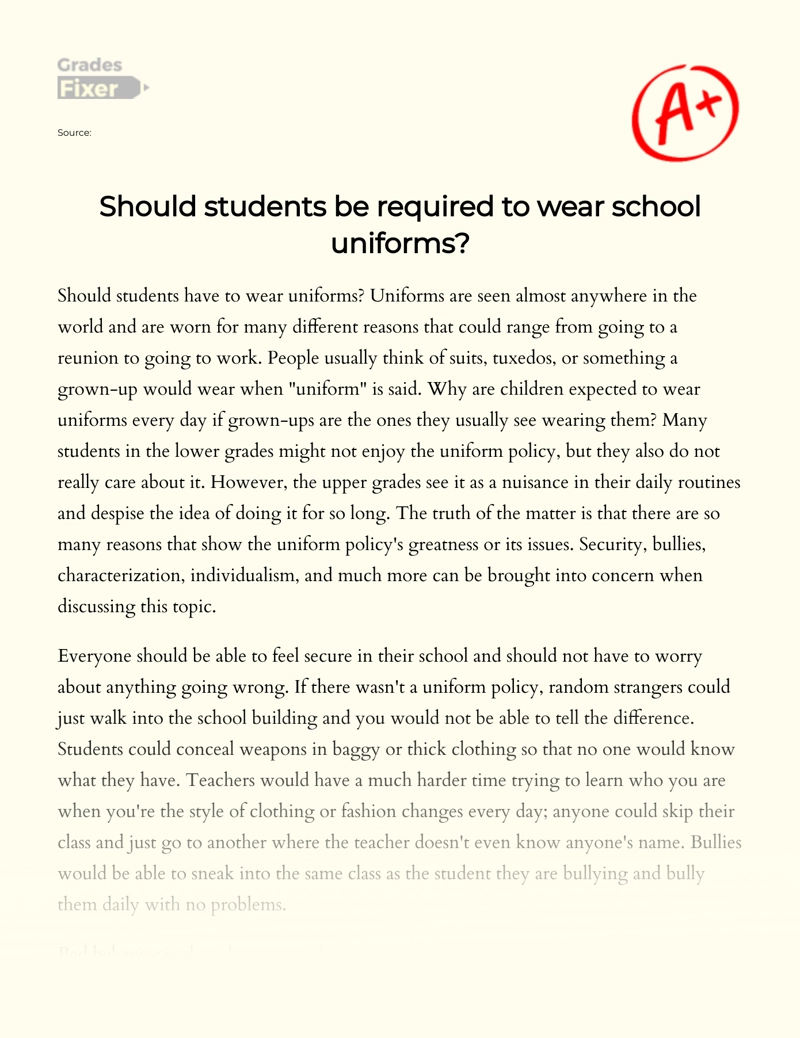School uniforms have long been a controversial topic among educators, parents, and students. On one hand, some argue that requiring students to wear uniforms promotes a sense of unity and equality among students, as well as fostering a more serious and focused learning environment. On the other hand, others argue that mandatory uniforms can be restrictive and may infringe upon students' freedom of expression.
One argument in favor of school uniforms is that they promote a sense of unity and equality among students. By requiring all students to wear the same clothes, uniforms can help to level the playing field, eliminating distinctions between students based on their clothing or appearance. This can be especially important in low-income schools, where students may not have access to the same brand name or designer clothes as their more affluent peers. In this way, uniforms can help to create a sense of community and belonging among students, regardless of their socio-economic background.
Another argument in favor of school uniforms is that they can create a more serious and focused learning environment. When students are not distracted by their own clothing choices or by what their peers are wearing, they may be more likely to concentrate on their studies. In addition, uniforms can help to establish a sense of professionalism and respect for the school and its rules. By requiring students to dress in a certain way, schools can set expectations for behavior and encourage students to take their studies more seriously.
However, there are also valid arguments against mandatory school uniforms. One concern is that uniforms can be restrictive and may infringe upon students' freedom of expression. For many students, clothing is an important way to express their individuality and personality. By requiring students to wear the same clothes, schools may be taking away an important outlet for self-expression. In addition, uniforms may be seen as a form of control, particularly if they are imposed by school administrators or teachers rather than being chosen by the students themselves.
Another concern is that uniforms can be expensive, especially for families with multiple children. While some schools may offer financial assistance for uniforms, this may not be an option for all families. In addition, uniforms may not always be comfortable or practical for students, especially in hot weather or for those participating in physical activities.
In conclusion, the question of whether school students should be required to wear uniforms is a complex one with valid arguments on both sides. While uniforms may promote a sense of unity and a more serious learning environment, they can also be restrictive and costly. Ultimately, the decision of whether to require uniforms should be made on a case-by-case basis, taking into account the specific needs and concerns of the school community.







